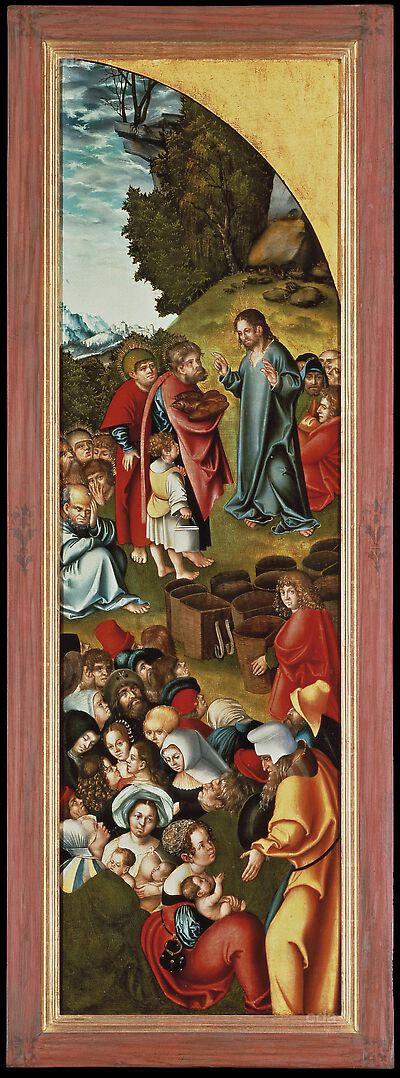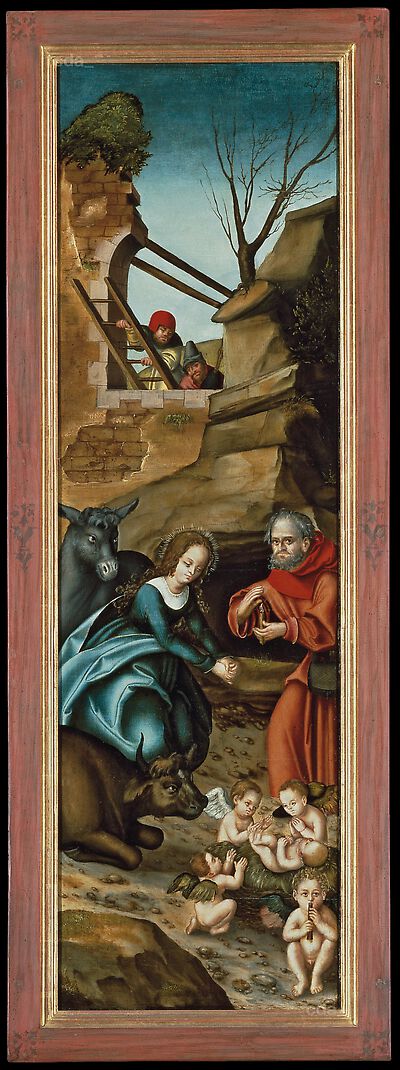- Attributions
-
Workshop Lucas Cranach the Elder
Circle of Lucas Cranach the Elder
Attributions
| Workshop Lucas Cranach the Elder | [Christie's online database, accessed 19.11.2024] [Christie's online database, accessed 20.05.2019] |
| Circle of Lucas Cranach the Elder | 'sold at Lempertz in 1968 as by 'A Master of the environs of Kulmbach, in the Circle of Lucas Cranach the Elder'' |
| Matthes Cranach | [or pupil or workshop collaborator, Erichsen 1994, 157] |
- Production dates
- about 1510 - 1512
about 1515 - 1520
Production dates
| about 1510 - 1512 | [Erichsen 1994, 157] |
| about 1515 - 1520 |
- Dimensions
- Dimensions of support: 147 x 44.4 cm
Dimensions
Dimensions of support: 147 x 44.4 cm
Dimensions of support: 164.2 x 59.7 cm
- Signature / Dating
none
- Inscriptions and Labels
none
Inscriptions and Labels
Inscriptions, Badges:
none
- Owner
- Private Collection
- Repository
- Private Collection
- CDA ID
- PRIVATE_NONE-P187c
- FR (1978) Nr.
- FR-none
- Persistent Link
- https://lucascranach.org/en/PRIVATE_NONE-P187c/
![Triptych with Christ among the Doctors [right panel]: The Marriage at Cana [recto], The Nativity [verso]](https://lucascranach.org/imageserver-2022/PRIVATE_NONE-P187c_FR-none/01_Overall/PRIVATE_NONE-P187c_FR-none_Overall-s.jpg)
![Triptych with Christ among the Doctors [central panel]](https://lucascranach.org/imageserver-2022/PRIVATE_NONE-P187a_FR-none/01_Overall/PRIVATE_NONE-P187a_FR-none_Overall-s.jpg)
![Triptych with Christ among the Doctors [left panel]: The Multiplication of the Loaves and Fishes [recto], Saint Elizabeth of Thuringia giving Alms [verso]](https://lucascranach.org/imageserver-2022/PRIVATE_NONE-P187b_FR-none/01_Overall/PRIVATE_NONE-P187b_FR-none_Overall-s.jpg)


